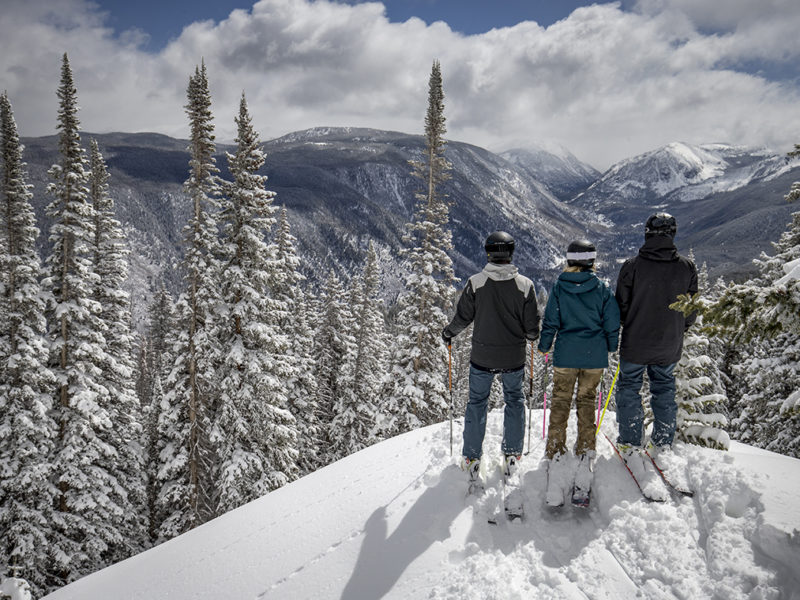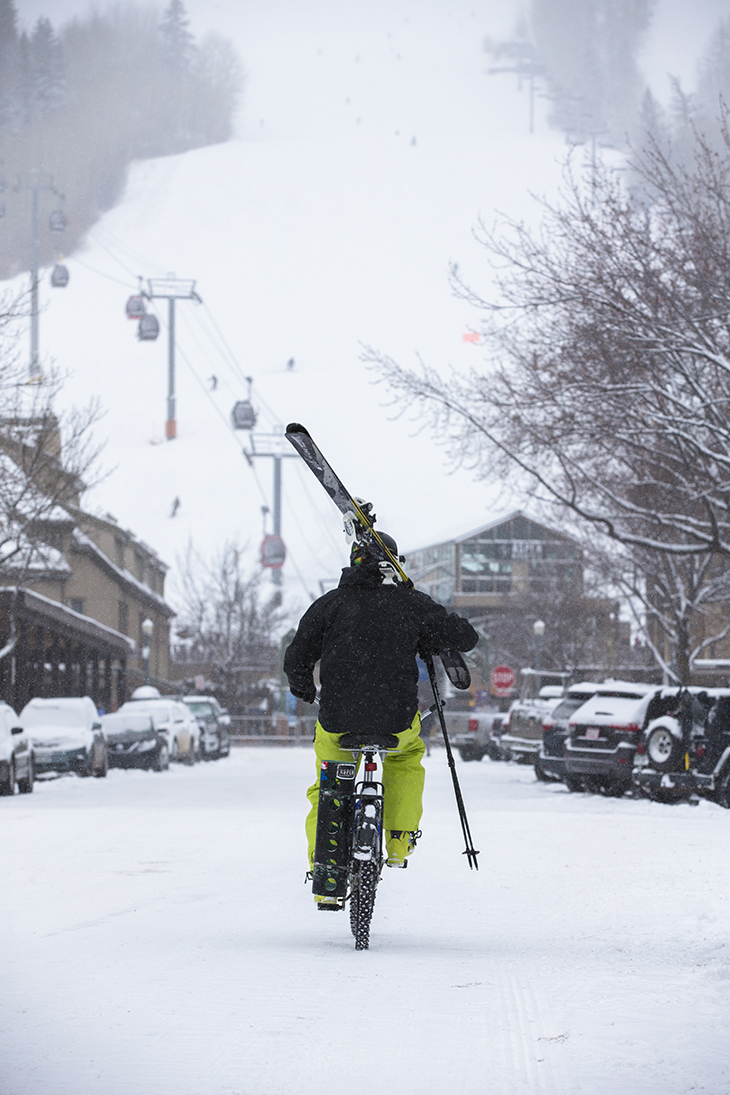
First Chair Fodder — Skids: Saving the world through skiing and sustainable living
Featured Image: Matt Power | Location: Aspen Snowmass, Colorado
Ah, the ski bum; variously respected, envied or maligned, judged and broadly misunderstood, depending on who’s doing the sizing up. Ski bums are a tiny but fiercely proud group forming a subset of a subset of society. Also known as “skids” and “dirt bags,” most in this group don’t care what the outside world thinks because they’re having a great time, with nothing to worry about other than the all-out pursuit of the seemingly pointless, yet deeply satisfying and most definitely extra-fun sport of skiing.
Whatever your take on ski bums (which, most likely, you are one or you’d like to give it a go), let’s face it; they’re admirable purists, able to have the most fun, while simultaneously summoning supreme discipline, ingenuity and hard work to achieve more time and money for skiing.
From an outsider’s perspective, skiing can be offensively expensive and wasteful, but, like most things in life, perception isn’t the rule. And sure, undiscerning vacationers and marketing victims can easily blow the GDP of a small nation on a week-long family ski trip and probably still be dissatisfied, but, that’s their problem.
Ski bums aren’t this gullible. When they’re skiing, life is so rich they can hardly stand it. When there’s no skiing, they work all the time, scrimping and hoarding their hard-earned cash—they’ll eventually blow the money, but it’s not going to be on whimsical, pointless crap. They won’t lose one dollar to, say, the bottled water industry, when refilling their Klean Kanteen is free. Who, exactly, pays for gas and parking when there’s carpooling, hitching, biking and public transit? And who wastes money on a gym when push-ups are free, mountains offer climbing and skiing and, from May to November, bike commuting everywhere equals strength and fitness? When you mete out the minimal amount for daily survival, you waste nothing. In fact, skids don’t even waste things others have purchased–of course, you’ll take home the second half of a $20 dinner your friend left at the restaurant. And those cold fries, or the congealed nachos that everyone else is too good to look at. Those are solid next day breakfast calories—this current food waste epidemic is certainly not because of skids.
Let’s think about things skids don’t contribute to. Did you know that Americans waste 50 percent of all produce, equating to $160 billion annually? Or that textile industry studies say the average American throws out 70 pounds of clothing per year? Or that the average U.S. person’s bottled (i.e. plastic) water consumption is over 32 gallons a year? When tap water is free and (usually) clean? How insurmountably bizarre.
Listen, I know what I am talking about. I practiced being a skid, not spending money on anything but the absolute necessities (food, quality health insurance, usually housing, plane tickets to the Alps and Andes) and not wasting anything for a solid decade. For example, I discovered the inside of a broccoli stalk is delicious because I had to pay for that stalk and I was going to eat it, dammit. Once, sitting on the side of a road in a tiny town in northern Italy, hitching a ride to ski in the Ortler-Cevedale, my friend bought strawberries and then proceeded to eat about 75 percent of each one. After a short lecture from yours truly on how much in uneaten strawberries was being wasted right in front of us, she wisely polished off everything but the green tippy tops. Phew.
 Photo: Jesse Hoffman | Location: Aspen, Colorado
Photo: Jesse Hoffman | Location: Aspen, Colorado
Same for the resource-heavy ski gear, from socks to skis, which smart ski bums replace only when the previous gear is used to the utmost and destroyed beyond repair. Turns out, this is also good for the planet.
I think at this point skids deserve a more eloquent title: senior field researchers in day-to-day resource conservation and overall life happiness, perhaps? And, most importantly, when said skid evolves up in income, it’s hard to shake the lessons in frugality. I, for one, didn’t realize how good I had gotten at not wasting resources until I didn’t have to do it anymore. Yet, my habits had become hardwired.
I’m not simply talking about stingy skiers wearing black, duct-taped Gore-Tex, either. Even Ingrid Backstrom, who went from Squaw Valley bum to ski movie superstar, started on a skid budget. “It’s those little things you do out of necessity that help you realize the benefits later in life; the rewards of the ski bum philosophy just [become] ingrained,” she says. “All the stuff I did to save money—carpooling, not wasting food, not buying things I didn’t need—the more money I had to travel to competitions and ski in the winter. It became a rhythm of life.”
In conclusion, it’s abundantly obvious that ski bumming provides an incredible lesson regarding modern consumption and a valuable point of view. And while it’s unfeasible for everyone for many reasons, you don’t have to spend years in that curious mix of asceticism and hedonism to put the lessons to use. It’s simply taking to heart the truth that happiness doesn’t come by buying more things. It comes from doing more, and simply paying attention to where your dollars do and don’t go, and finding ways around everything marketed to you. That’s truly liberating in a society that promises happiness through consumption. I, for one, owe a debt to the ski bum philosophy and community for lessons in living a truly enriched, rewarding life–and trying to keep my own impact as low as possible.
Posted from FreeSkier



